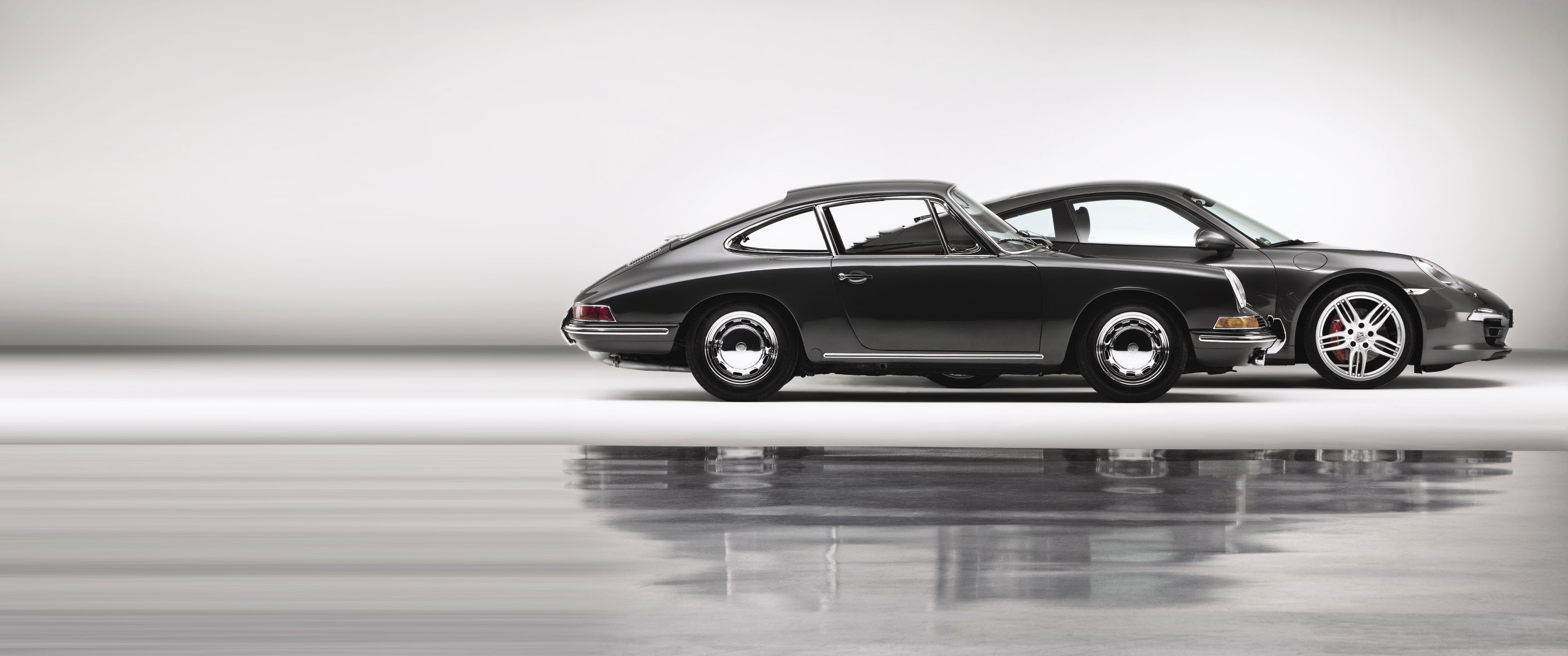 Prologue
Prologue
By Shaun Keenan
I don't know if you've noticed, but 2013 is the year of the Porsche 911. Here at PRN Ignition, we began the celebration early.
While I am fully aware that snow is the last thing on most people's minds this time of year, any day is as good as the next to reflect upon some of the more exciting things I get to do as part of my job. That said, those times when you are allowed – no encouraged – to fling a brand new Porsche 911 around a closed course and not worry about kissing curbs, tire walls or cement barriers are few and far between.
Well, that's exactly what happened. In fact, it was still the dead of winter when I headed to the Saint-Donat region of Quebec where Porsche Camp4 Canada was in full swing at the renowned ice racing facility known as Mecaglisse.
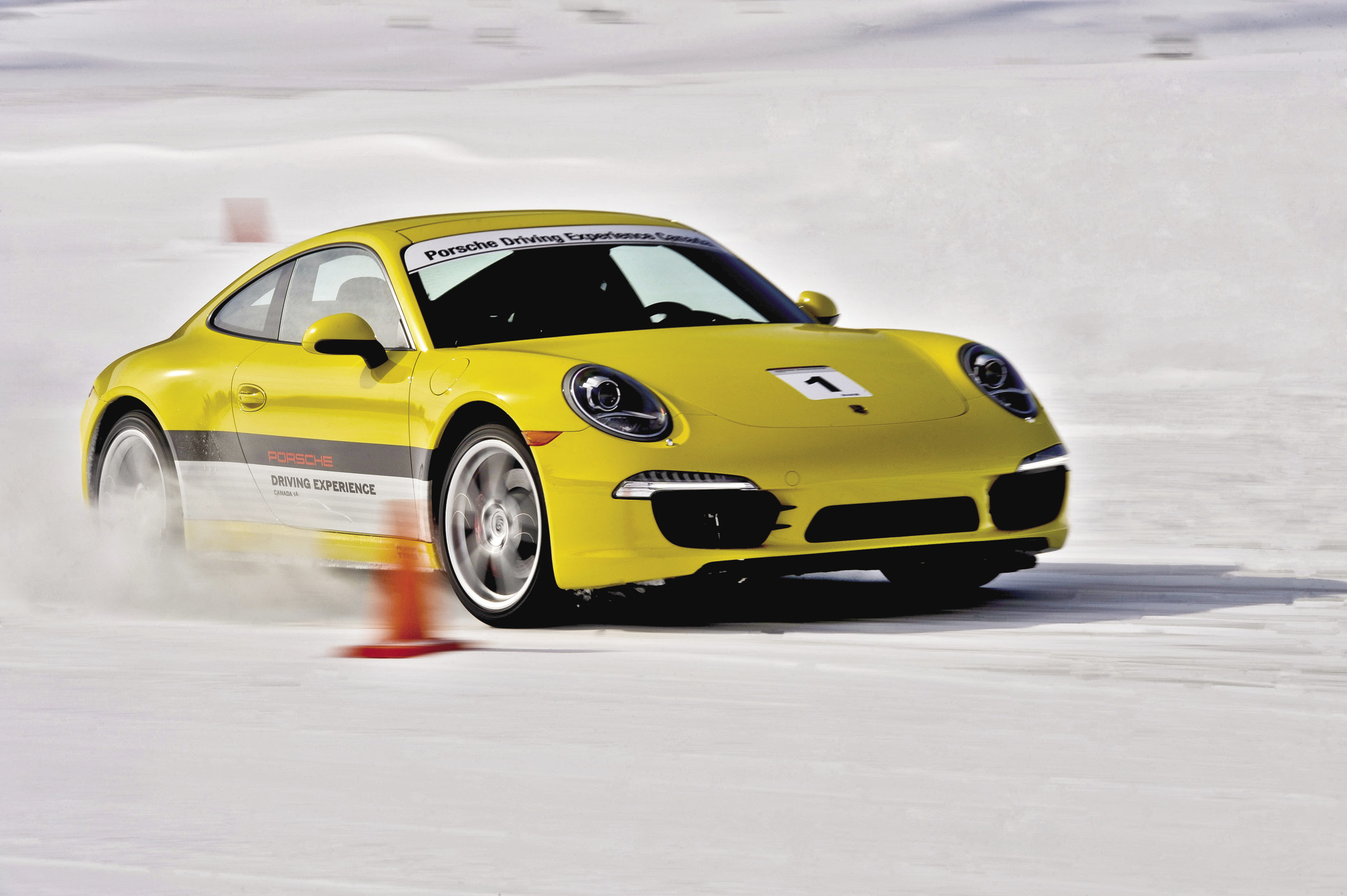
Camp4 is a Porsche Driving Experience anybody can attend – even non Porsche owners are welcome – to have fun and learn car control by drifting around icy purpose-built tracks. Participants have access to many of the latest current Porsche models, including the Boxster S, Carrera 2S and the newest member of the 911 family, the C4S. In fact, barring a few customer cars that may have been delivered before this year's Camp4, we are lucky to have been amongst some of the first to drive the new C4S anywhere in Canada. And, we did it on ice baby!
Compared to the Carrera 4 models, the C4S has different front air intakes, a wider body in the rear (+44 mm total) and a light strip that connects the taillights, but what makes it so fun to drive in these conditions is the all-wheel drive system and Nokian winter tires equipped with 3 mm studs.
The copious amounts of traction combined with the short wheelbase, light weight and a robust powerband prove these cars at home in this environment far from the hot summer asphalt. So much so I experience far more traction than I ever thought possible at this time of year (far more than any other winter tire I've driven on, in fact) on a super-slick ice track no less.
All of the cars are sporting these tires; and, although studded tires like this are not road legal in most parts of Canada, the Porsches are. They make driving on the facility's three snow-covered road courses and large winter skid pad not only possible, but also extremely fun and satisfying.
I have attended the Porsche Sport Driving School (PSDS) at Barber Motorsports Park in Alabama to learn from some the best instructors, including SCCA/IMSA veteran road racer Cass Whitehead, 2011 Rolex GT Champion Andrew Davis and even Porsche Racing legend Hurley Haywood to name a few.
I've turned many laps in a variety of Porsches, but Porsche Camp4 Canada just might be the most fun I've ever had in a Porsche, or any car for that matter.
911 by the numbers
“2012 was the most successful year in the history of our company,” says Matthias Müller, Porsche AG Chairman of the Executive Board. “The success that Porsche enjoys in the marketplace can be attributed very largely to our attractive product portfolio. We further enhanced this last year with the addition of several new, fascinating sports car models.”
Chief among them is the current 911. Sales of the new 911 alone, launched in December 2012, increased by 37.6% in its first full quarter, compared with sales of the predecessor model one year earlier.
Not only is Porsche coming off of its best year ever, the Stuttgart-based car maker is cautiously optimistic that 2013 will be an even better year. In 2012, global sales grew by 22% and, of the 151,999 vehicles produced, Porsche sold 143,096 of them, which is a solid 94%.
Porsche Cars Canada, importer and distributor of Porsche vehicles in Canada, recently had its best month ever, with April sales reaching 404 units, up 23.2% from the previous April record of 328, established last year.
Sales of the 911 lineup continued to show strength with 99 units, an increase of 13.8% reportedly. And, the April launch of the all-new 2014 Cayman has also allowed the model line to reach 32 vehicles, a jump of 88.2% over the prior year.
SK
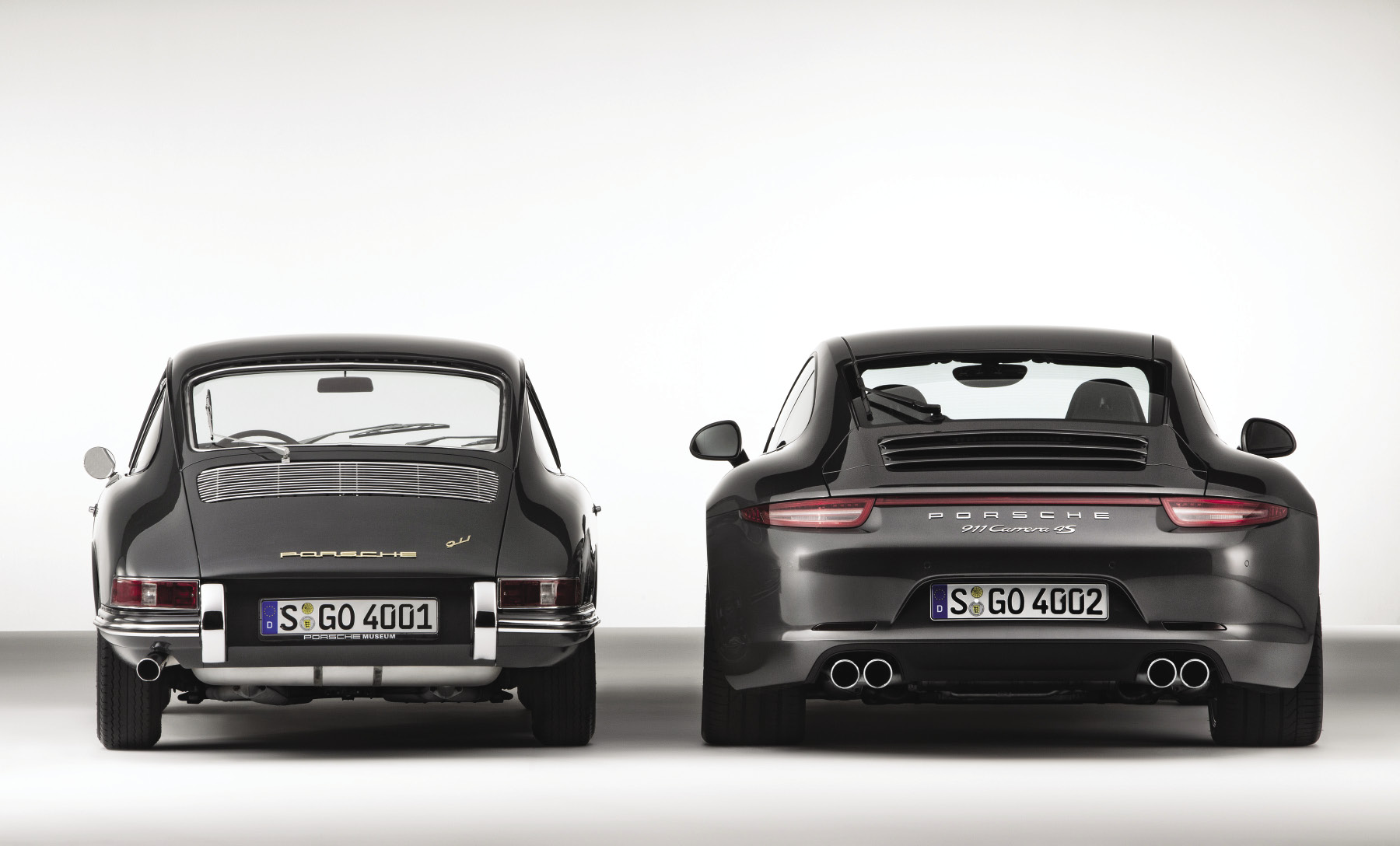 |
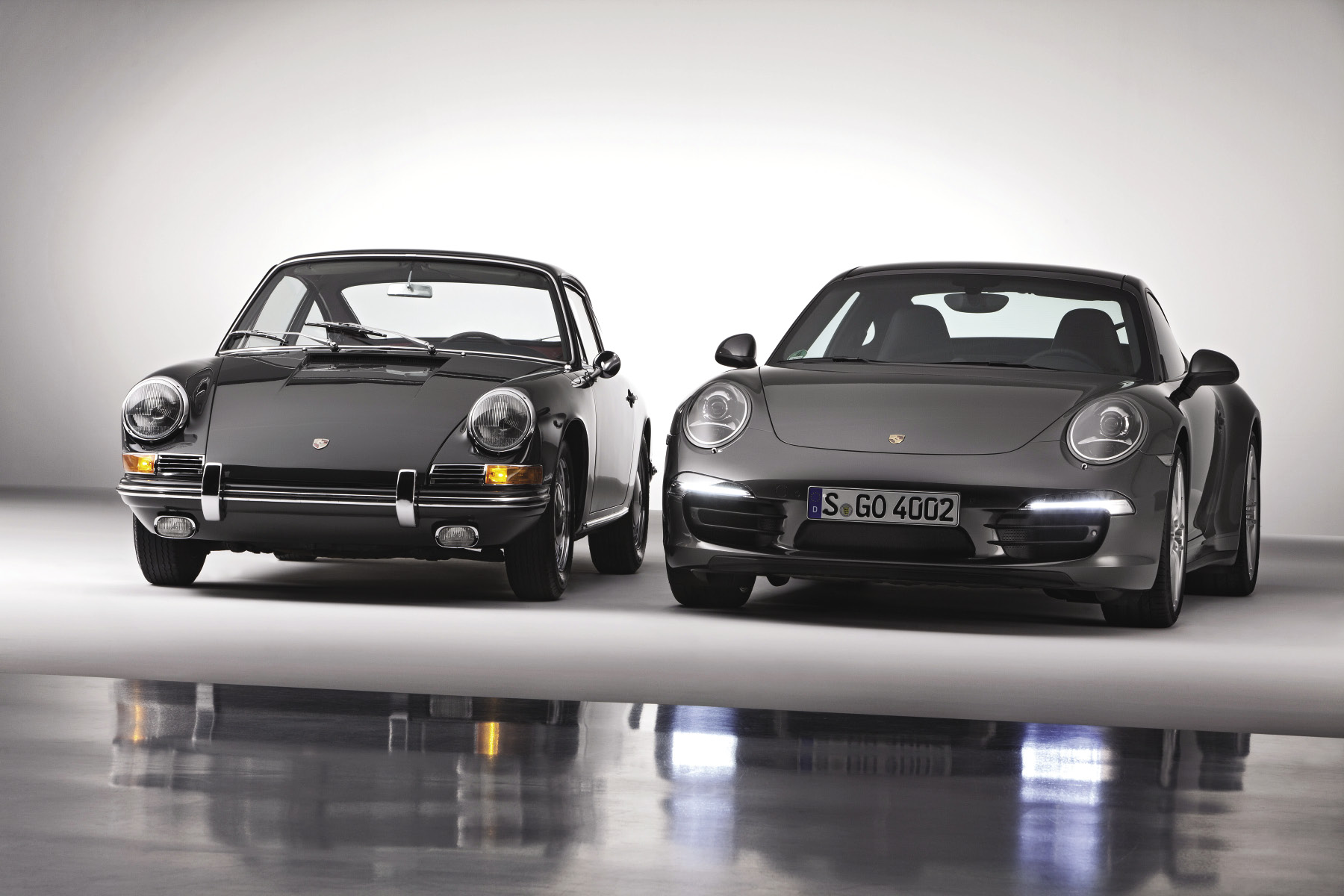 |
Production and Timeline
For a half century, the 911 has been the beating heart of the Porsche brand. Few sports cars can look back on such a long tradition and such continuity as the Porsche 911, which has been inspiring car enthusiasts the world over since debuting in September 1963 as the model 901 at the IAA International Automotive Show.
Like no other vehicle, the 911 reconciles apparent contradictions such as sportiness and everyday practicality, tradition and innovation, exclusivity and social acceptance, design and functionality. It is no wonder that each generation has written its own personal success story.
Ferry Porsche, son of the company's founder Professor Ferdinand Alexander Porsche, famously described its unique qualities: “The 911 is the only car you could drive on an African safari or at Le Mans, to the theatre or through New York City traffic.”
Today, the 911 is considered the quintessential sports car, the benchmark for all others. It is also the central point of reference for all other Porsche series. From the Cayenne to the Panamera, every Porsche is the most sporting automobile in its category, and each carries a piece of the 911 philosophy.
As of March 2013, more than 820,000 Porsche 911s have been built, making it the most successful sports car in the world. For each of its seven generations, the engineers in Zuffenhausen and Weissach have reinvented it time and again to demonstrate the innovative power of Porsche to the world.
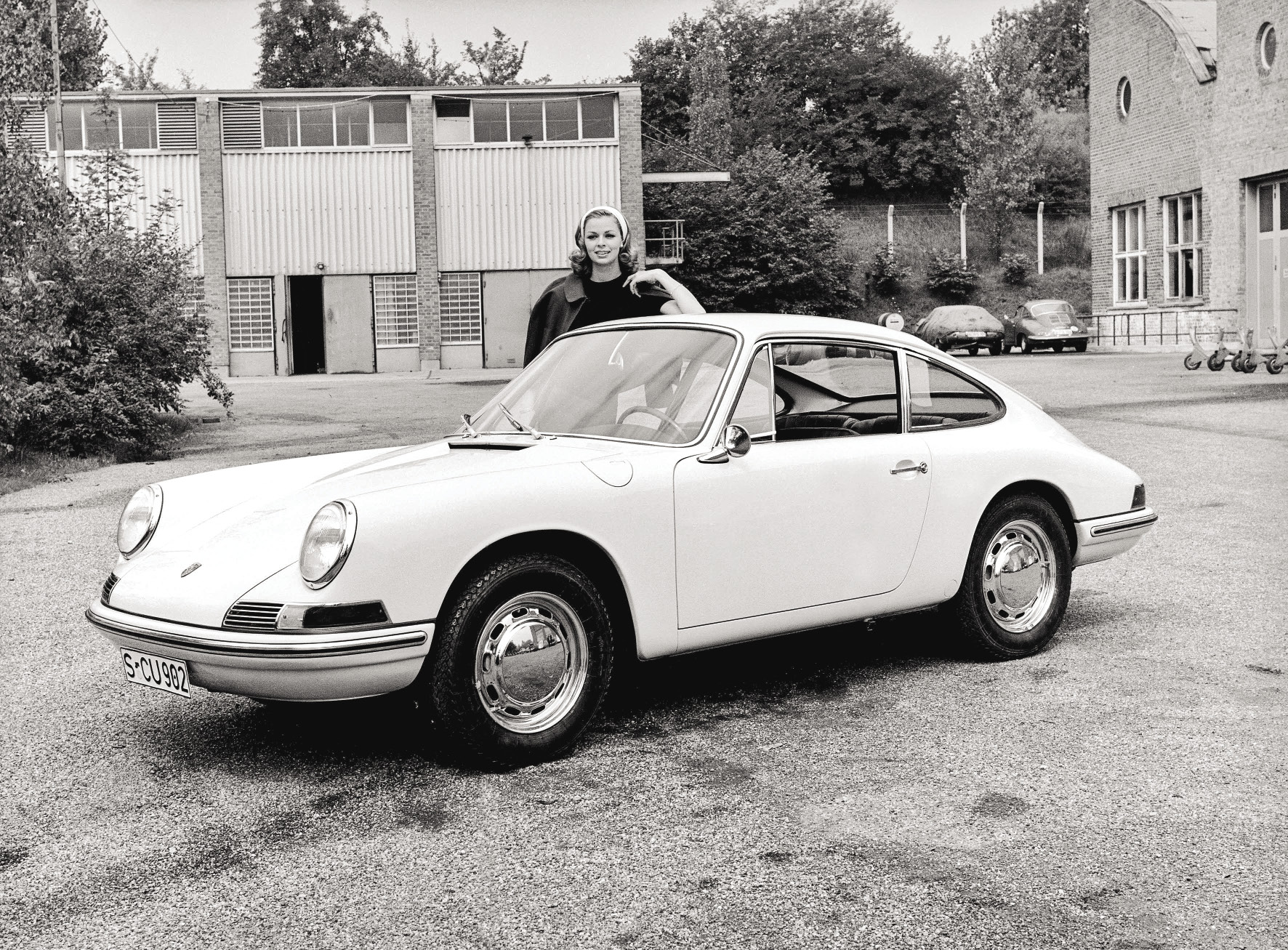
The First 911 (1963) – Birth of a Legend
As the successor to the Porsche 356, the 911 won the hearts of sports car enthusiasts from the outset. Unveiled at the Frankfurt IAA Motor Show in 1963 as the 901 and renamed the 911 for its launch in 1964, the air-cooled, six-cylinder boxer engine delivered 130 hp, giving it an impressive top speed of 210 km/h. In 1965, the Porsche 912 was offered as a smaller four-cylinder option, followed by the 911 Targa and semiautomatic Sportomatic four-speed transmission in ‘66. The 911 became more powerful as displacement increased, to 2.2 litres in 1969 and 2.4 litres in 1971. The 911 Carrera RS 2.7 of 1972 included a 210-hp engine and weighed less than 1,000 kg – the epitome of a dream car to this day.
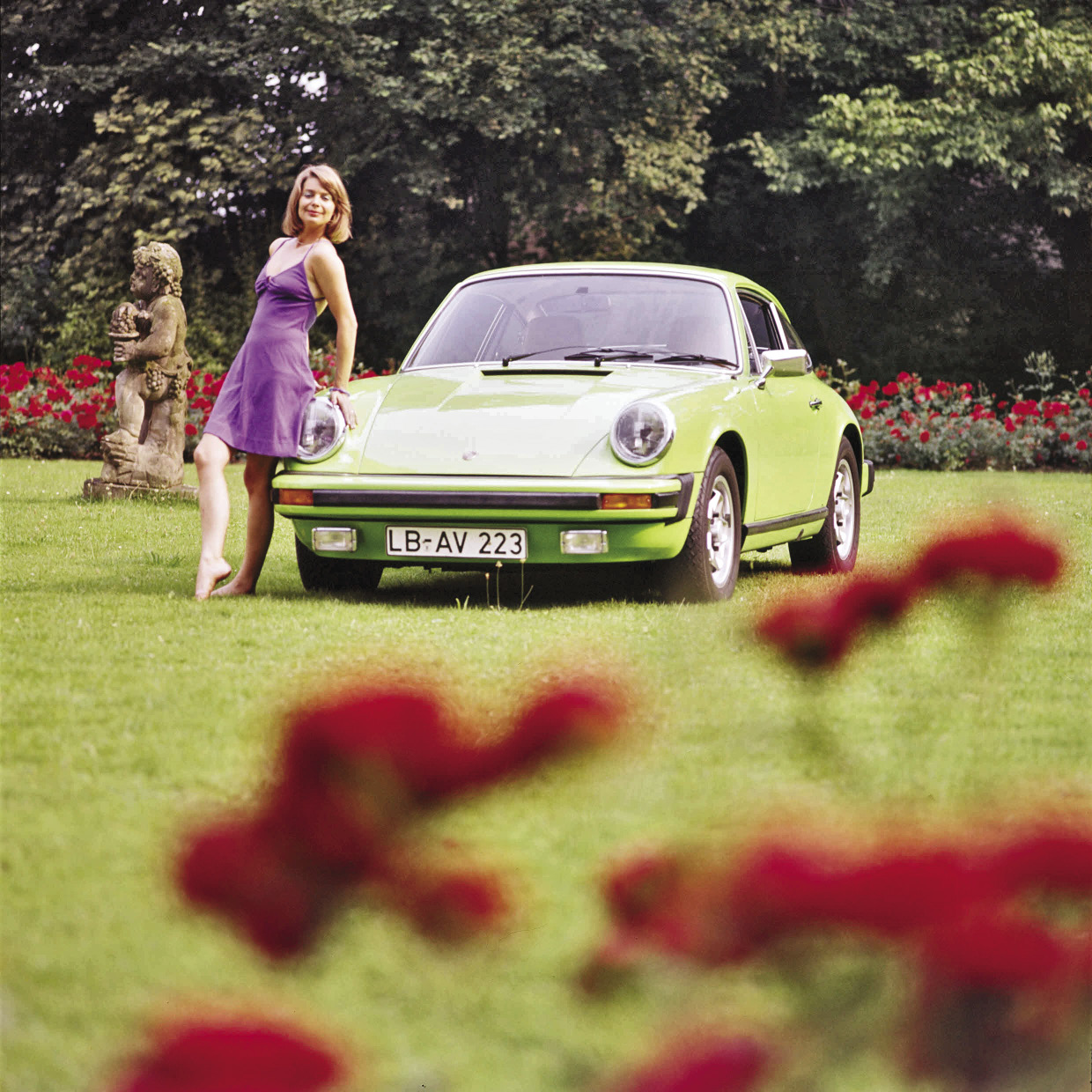
The G-Series (1973-1989) – The Second Generation
The 911 received its first full makeover 10 years after its premiere and was produced longer than any other 911 generation. One of the most important milestones in the 911 timeline was the 1974 unveiling of the first Porsche 911 Turbo. The three-litre 260-hp engine and enormous rear spoiler became synonymous to the Porsche identity. The next performance jump came in 1977 with the intercooler-equipped 911 Turbo 3.3, including a best in class 300 hp. Starting in 1982, fresh air enthusiasts could also order the 911 as a Cabriolet.
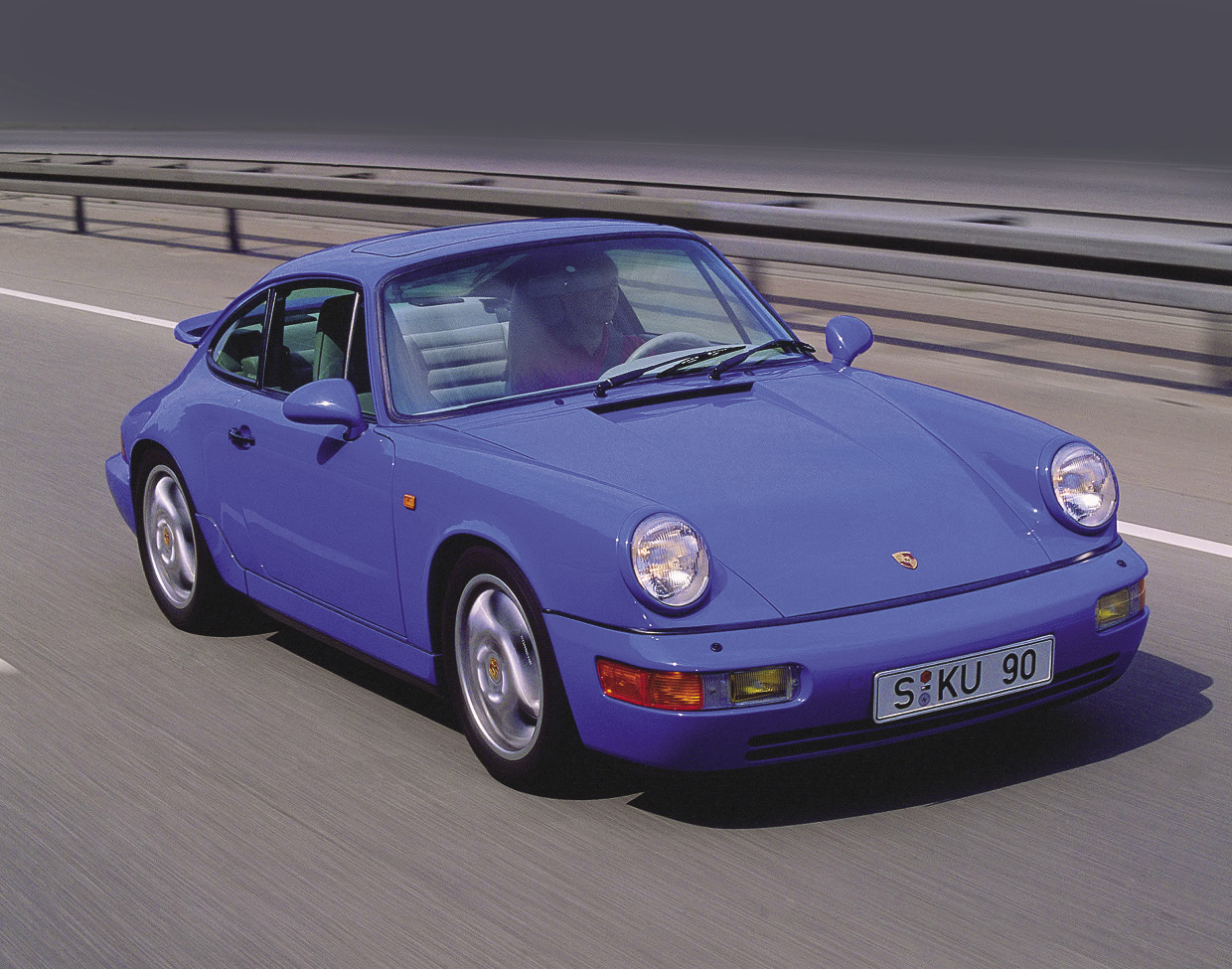
The 964 (1988) – Classic Modern
Just when automotive experts were predicting the end of an era, Porsche came out with the 911 Carrera 4 in 1988. The platform was radically renewed with an air-cooled, 250-hp 3.6-litre boxer engine, ABS, Tiptronic shifting, power steering, airbags, a redesigned chassis, automatic extending rear wing and Porsche’s first AWD system, among other things. In addition to Carrera Coupé, Cabriolet and Targa versions, in 1990, customers could also order the 964 Turbo. Initially powered by the 3.3-litre boxer engine, in 1992 the Turbo was upgraded to a 360-hp, 3.6-litre power plant.
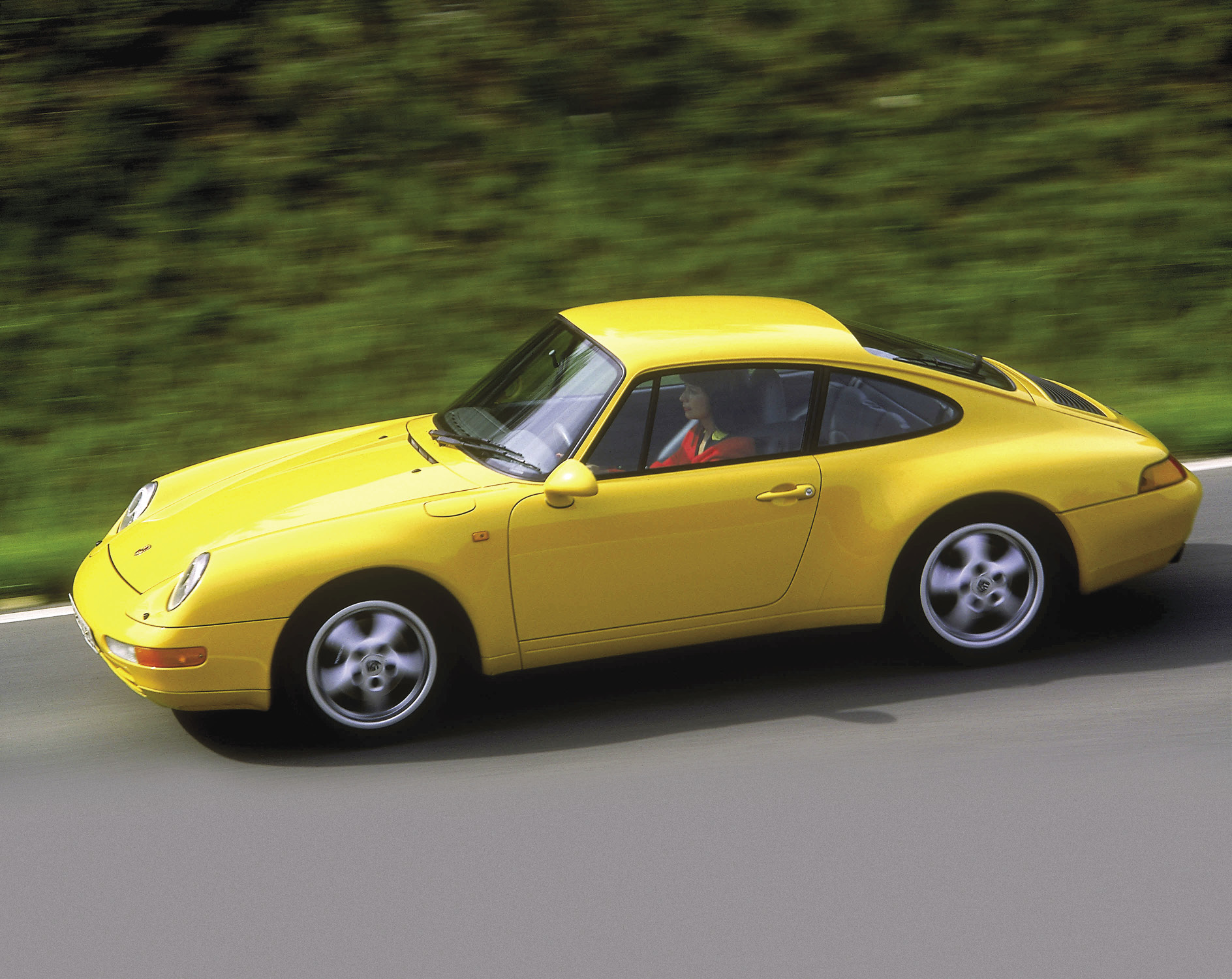
The 993 (1993) – The Last Air-Cooled Models
The 911 type-993 was a smooth, elegantly-styled design, integrated bumpers and low-slung front bumpers, made possible with the new headlight design. The 993 quickly gained a reputation for exceptional dependability and reliability. It was also agile, thanks to a newly designed aluminum chassis. The 1995 Turbo was the first to have a bi-turbo engine, giving it the lowest-emission stock automotive powertrain in the world in 1995. The Porsche GT2 was released for high-performance enthusiasts, as was the 911 Targa, featuring an electric glass roof that slid under the rear window. But the 993s legacy undoubtedly stands as being the last of the air-cooled 911s.
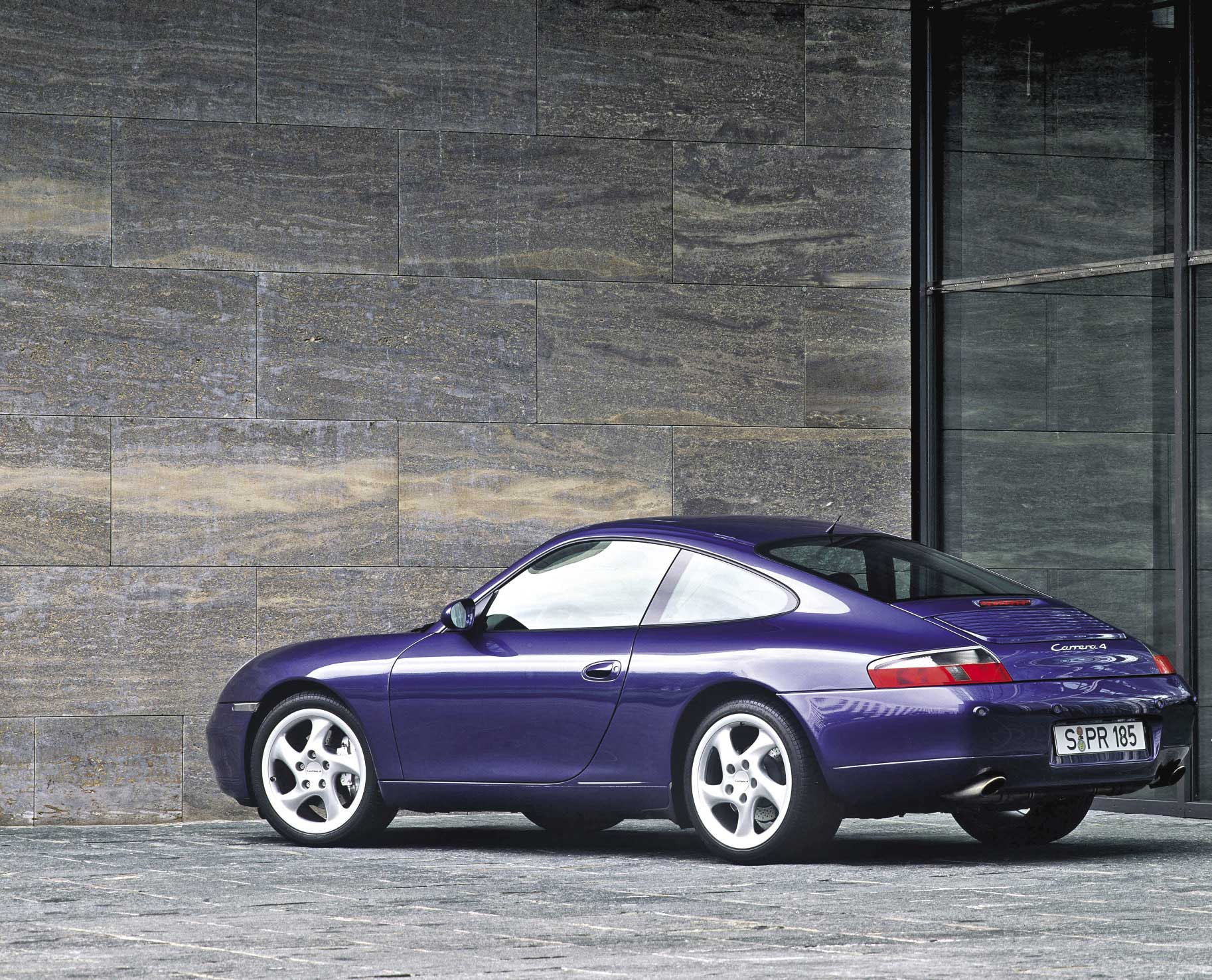
The 996 (1997) – Water-Cooled
The 996 represented a major turning point in the history of the 911; it was an entirely new automobile. It was the first water-cooled boxer engine and, thanks to its four-valve cylinder heads, it achieved 300 hp and broke new ground in noise and fuel consumption ratings. The exterior was a reinterpretation of the classic 911 with a lower drag coefficient of 0.3 (cW). The most obvious change was the integrated turn-signal headlights. Drivers also experienced a new cockpit focused on comfort to match the sporty characteristics. The 996 launched an unprecedented product line with a whole series of new variations. The 1999 911 GT3 became a highlight of the model range, keeping the tradition of the Carrera RS race car alive. The 911 GT2 was the first car equipped with ceramic brakes as standard and was marketed as an extreme sports vehicle in the fall of 2000.
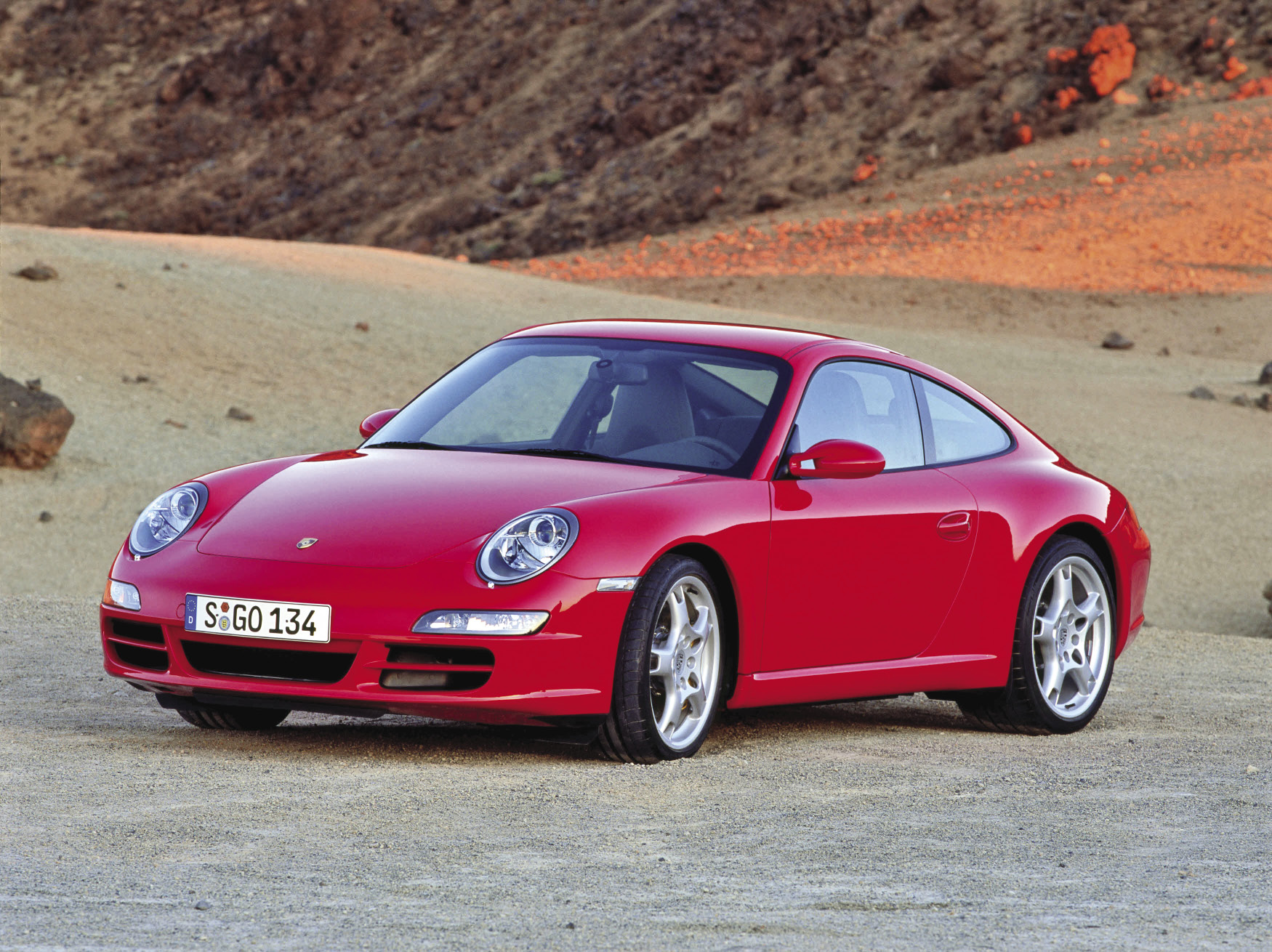
The 997 (2004) – Classicism and Modernity
Porsche unveiled the new 911 Carrera and 911 Carrera S Type-997s in July 2004. The oval headlights and separate blinkers were a return to older 911 models, but the 997 was also a higher-performance vehicle. The 3.6-litre boxer engine turned out 325 hp, while the 3.8-litre engine of the Carrera S managed an incredible 355 hp. The chassis was reworked also; the Carrera S coming with Porsche Active Suspension as standard equipment. In 2006, Porsche introduced the 911 Turbo, the first gasoline production automobile to include a turbocharger with variable turbine geometry. An update in 2008 made the 997 even more efficient, with direct fuel injection and a dual clutch transmission. Altogether, the Carrera, Targa, Cabriolet, Turbo, GTS, special models and road versions of GT racecars totaled 24 different versions of the 911.
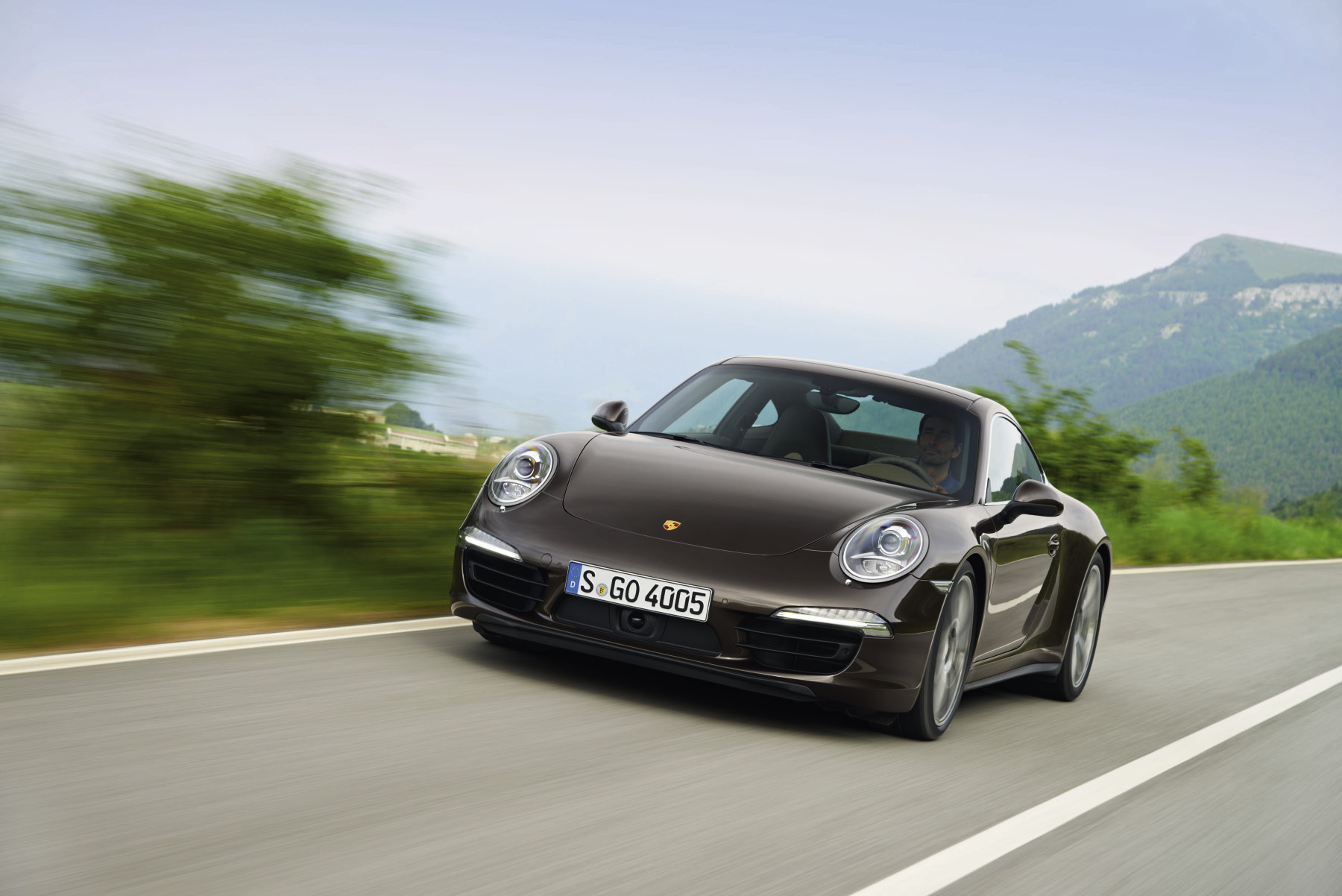
The 991 (2011) – Refined by Experience
Known internally as the 991, Porsche’s newest model represents the greatest technical leap of the 911. The new generation continues to raise performance while being more fuel efficient than its predecessors, due in part to the world’s first seven-speed manual transmission, hybrid steel/aluminum construction and Porsche’s Dynamic Chassis Control anti-roll system. The brand-new suspension is met with a longer wheelbase, wider track and larger tires for an even sportier and more comfortable driving experience, while the GT3 includes active-rear wheel steering, another first for a Porsche production car. The 991 continues to push the boundaries of innovation and performance, while the silhouette holds true to the heritage styling of the 911. Who says change is always a good thing anyways?
It is the best 911 of all time... until the next generation.
Racing Pedigree
By Jordan Lenssen
In addition to its classic yet unique lines, the Porsche 911 has always been distinguished by its advanced technology. By logic the car defies physics, the rear engine hanging over the driveshaft should make it nearly undriveable, but the 911 has been an example of technical mastery. Many of the ideas that made their debut in the Porsche 911 were conceived on the race track – the 911 has been committed to pure performance from the start – and motor racing is its most important test lab.
No other production automaker is as deeply rooted in motorsport as Porsche. Starting with a class victory at Le Mans in 1951 with the first 356 Light Metal Coupé, Porsche Motorsports has celebrated more than 54 major world and national championships and 137 wins in Formula One, sports car, endurance, rally and hill climbs worldwide.
In just 50 years, the 911 has reached more drivers and racers than any car ever built. Porsche racing engineer Norbert Singer can almost singlehandedly take credit for that success, playing a major role in all 16 of Porsche’s Le Mans victories. Originally tasked with developing the 911 road car for racing use, he is responsible for designing the legendary 956 and 962 Group C endurance cars, the WSC prototype, the 935 and 911 GT1.
From the very beginning it has been at home on circuits all over the world, earning a reputation as a versatile and dependable winner. Indeed, a good two thirds of Porsche’s 30,000 race victories to date were notched up by the 911.
With such a rich history, we take a look at some of the most iconic 911 sports cars and the people who raced them into the record books…

1968 Porsche 911T
Major Victories: 1968 Monte Carlo Rally
Championships: N/A
Drivers: Vic Elford, David Stone
Engine: Flat-six, air-cooled turbo
Displacement: 2.0L
Horsepower: 110 hp @ 5,800 RPM
Gearbox: Four-speed manual
Layout: RR
Weight: 1,030 kg
Coming off his 1967 European Rally Championship, which included a victory in the first-ever rallycross at Lydden Hill, Vic Elford landed the latest 911T (S-C 9166) in what is considered the 911’s first year of competition. Partnered with co-driver David Stone, the pair drove to an impressive victory on the streets and snow-covered hills at the grueling 37th Monte Carlo Rally. Elford’s car was a near-100% production model, but covered almost 5,500 km in just six days. More impressive, “Quick Vic” followed up with a win at the 24 Hours of Daytona the following weekend in a Porsche 908, to go along with a Nürburgring 1,000 km victory and one of the greatest comebacks ever – from 18 minutes back – in a 907 at Targa Florio.
That same year, four 911Ts were entered into Le Mans. Elford was given the task of driving a 908, but the two 911s that finished took the top two positions ahead of the only other finishing GT car, the Fiat Dino. Elford’s reputation quickly preceded him as one of Porsche’s all-time greats. He is also the only driver to pilot every version of the 917. Elford might owe much of his success to Porsche and the original 911, but likewise, he helped cement Porsche and the 911 as that of a winner from the beginning.
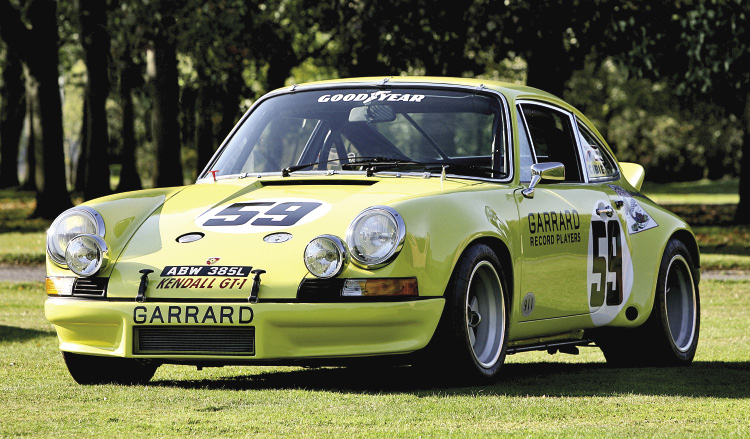 |
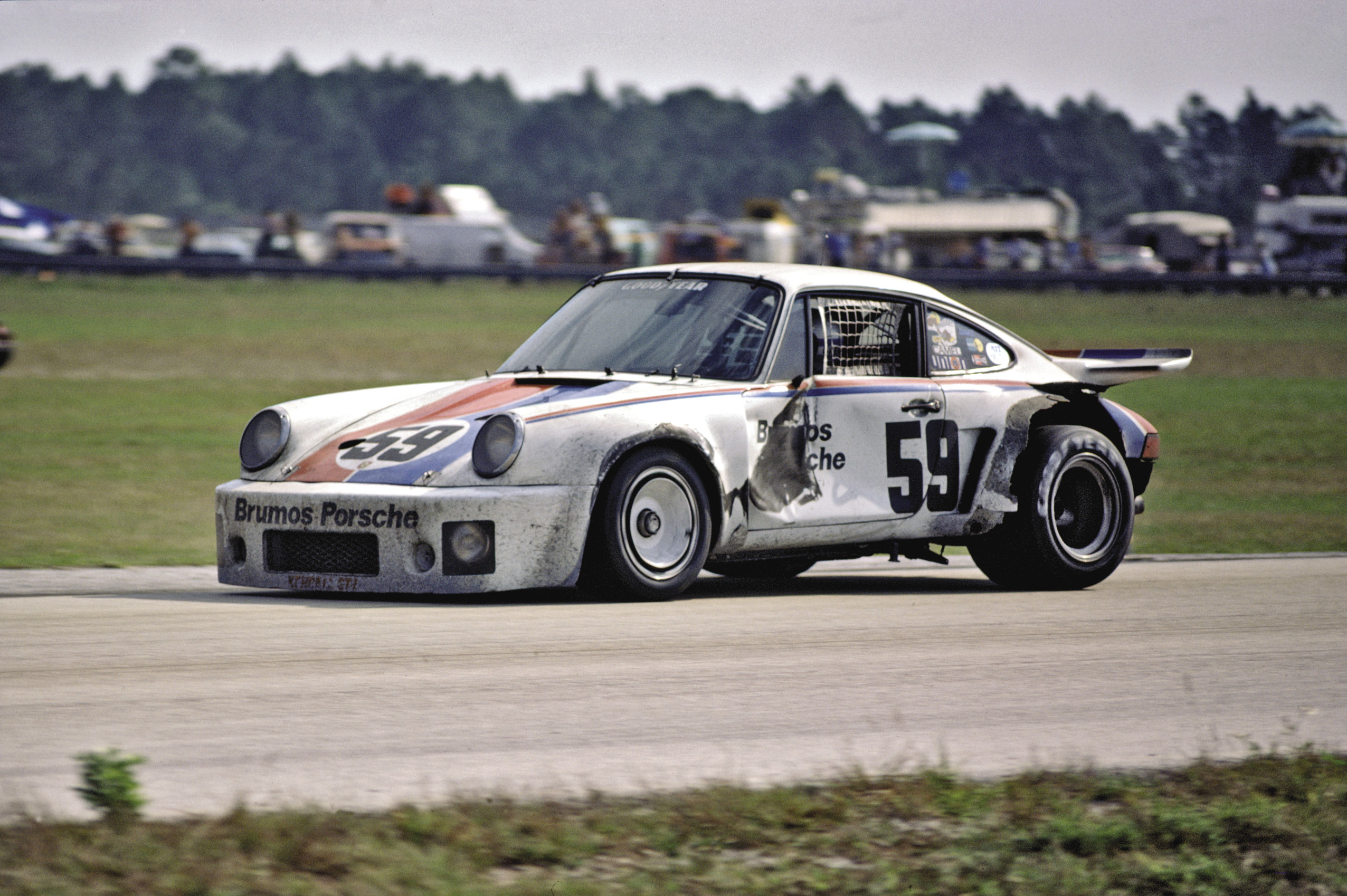 |
Brumos 911 Carrera RS & RSR
Major Victories: 24 Hours of Daytona Overall Victory (1973 RS, ’75 RSR)
12 Hours of Sebring (1973 RS)
Championships: IMSA GTO Championship (1973 RS, ’75 RSR)
Drivers: Peter Gregg, Hurley Haywood, Dave Helmick
Engine: Flat-six, air-cooled, naturally aspirated
Displacement: 2.7L / 3.0L
Horsepower: 210 hp @ 6,300 RPM / 330 hp @ 8,000 RPM
Gearbox: Five-speed manual / Five-speed full-synchro
Layout: RR
Weight: 920 kg / 900 kg
Established in 1971 after Peter Gregg purchased the Brumos Porsche dealership, Brumos Racing has four overall wins at the 24 Hours of Daytona – amazingly, three of them as participants in the GT class. The No. 59 Carrera RSR is responsible for two of those victories in ’73 and ’75, piloted by Gregg and current Brumos team/dealer owner Hurley Haywood. In 1977, Brumos switched to a 935/77, but Haywood, driving for the Ecurie Escargot team, drove the old Brumos car to the Daytona winners’ circle. Brumos won the following year in the 935, then again in 2009 in a Riley Mk XI-Porsche.
Hurley Haywood on the Carrera RS/RSR: “Anytime you win the 24 Hours at Daytona, it’s a great feat, but the one that really stands out in my mind is the ’73 race. We went into it with really no hope or thought of winning the race overall, but the car was quick and reliable and we soldiered on, got lucky and won the thing. Then we backed it up by winning Sebring.
“The first time I went to Le Mans driving for the factory team in 1977, I remember Professor Porsche told me, “We don’t pay our drivers very much, but we give them cars they can win races overall with. The rest will take car of itself.”
“Each 911 has a familiarity to one another. The 911 feels like home. I can’t express it any more distinctly. Every time I sit in a Porsche, regardless of the model, whether it’s a prototype, a production car, it feels the same to me. And I think that gives Porsche drivers a lot of confidence, to sit in a car they know well and feels like home.”
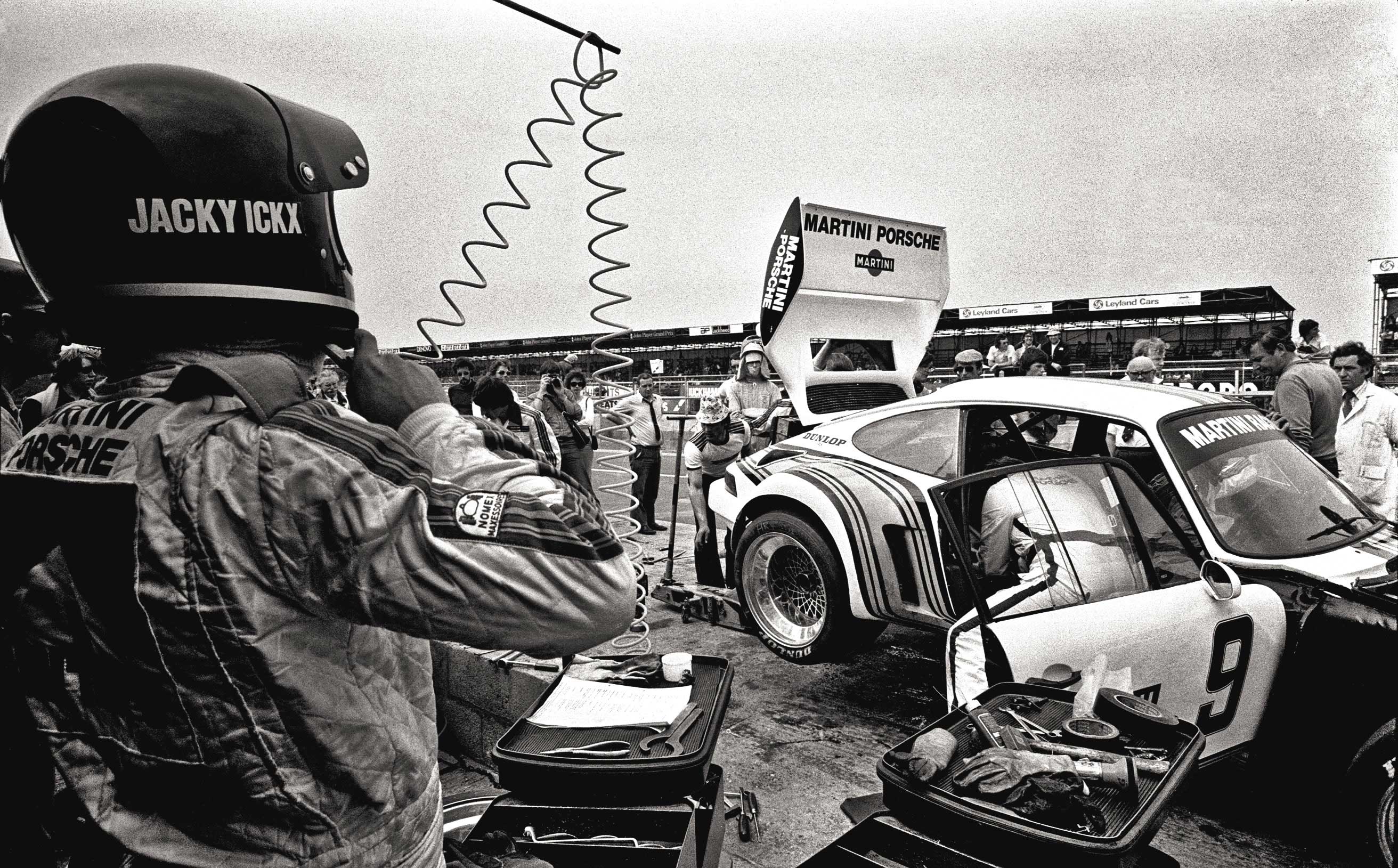 |
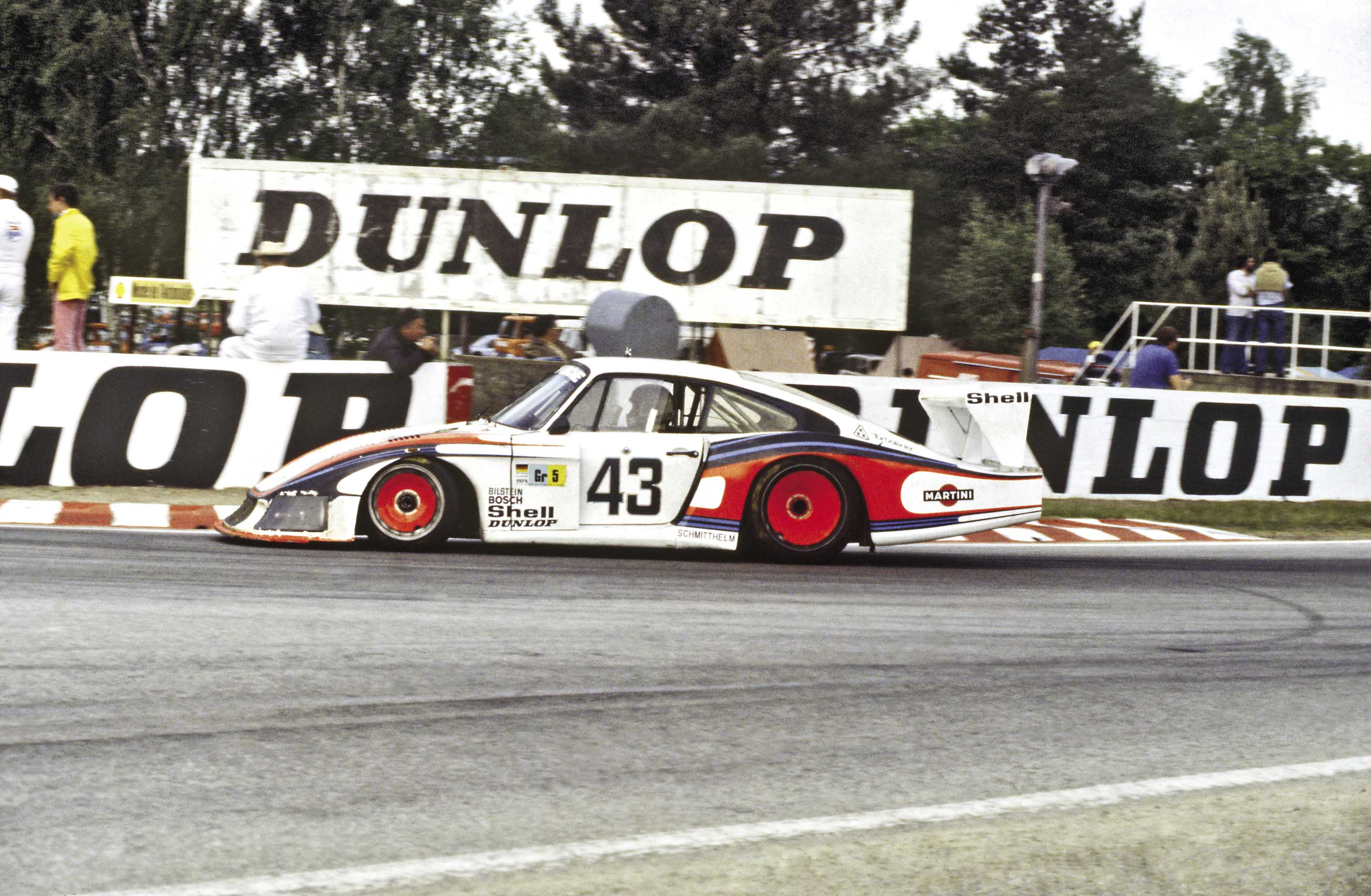 |
Martini Porsche 935/76 and the 935/78 ‘Moby Dick’
Major Victories: 24 Hours of Le Mans Class Victory (1976)
6 Hours of Silverstone (1978)
Championships: World Sportscar Championship for Makes (1976, ’77, ’78, ’79, ’80, ‘81)
Drivers: Jacky Ickx, Jochen Mass, Rolf Stommelen, Manfred Schurti
Engine: Flat-six, air-cooled turbo / Flat-six, air/water-cooled turbo
Displacement: 2.85L / 3.2L
Horsepower: 600 hp @ 7,900 RPM / 845 hp @ 8,200 RPM
Gearbox: Four-speed with rigid drive through / Four-speed, no differential
Layout: RR
Weight: 970 kg / 1,025 kg
The most successful sports car ever built, the 935 is an exaggerated wide body designed by Norbert Singer in 1976 to take complete advantage of the Automobile Club L’Ouest Group 5 ‘silhouette’ rules. Regulations stated the car must have the same profile as its production counterpart when viewed only from the front. As a result, the 935 had noticeably wide rear fenders and an extended wing. The original headlamps remained in tact on early versions, but were relocated to the front bumper to make way for the ‘slant nose’ version for reduced drag and greater downforce. Driven primarily by Jacky Ickx and Jochen Mass, when their Formula One schedules permitted, the famed Martini livery 935/76 saw Porsche return to the Constructors’ Championship after a five-year hiatus.
Dubbed ‘Moby Dick’ for its long, flowing lines, the 935/78 was built exclusively for the 1978 24 Hours of Le Mans. Displacement was pushed to 3.2L and the engine featured new, water-cooled cylinder heads, but still made use of traditional air cooling. The car took the 6 Hours of Silverstone in what was considered a test race, but only managed to place eighth at Le Mans before retiring to the Porsche museum.
The car was a true marvel of its time, dominating Group 5 events in various liveries worldwide, claiming the 1,000 km of Nürburgring (1977-79), the 24 Hours of Daytona (1978-82), the 12 Hours of Sebring (1978-84) and an overall victory at Le Mans in 1979.
Jochen Mass on the 935: “To me the 935 was always a compromise between a sports car and a race car, but it was neither, nor. The ‘Moby Dick’ – now that was a specific race car. It was wonderful. But at the Nürburgring the 935 was not a pleasant car to drive; it had a lot of power, but because of that – it had almost 850 hp – it became very tricky to drive. You had to drive it reasonably gently. If you pushed too hard it wouldn’t do the job. Norbert Singer was responsible for that car; he was much more of a race engineer and really one of the best there has ever been.”
On teammate Jacky Ickx: “Jacky (Ickx) and I didn’t see much of each other in Formula One because our cars were so different, but driving with him in the Porsches was always a pleasure. We get along really well and always agreed on the setup and there was no sort of internal rivalry, it was always very relaxing, which was great.”
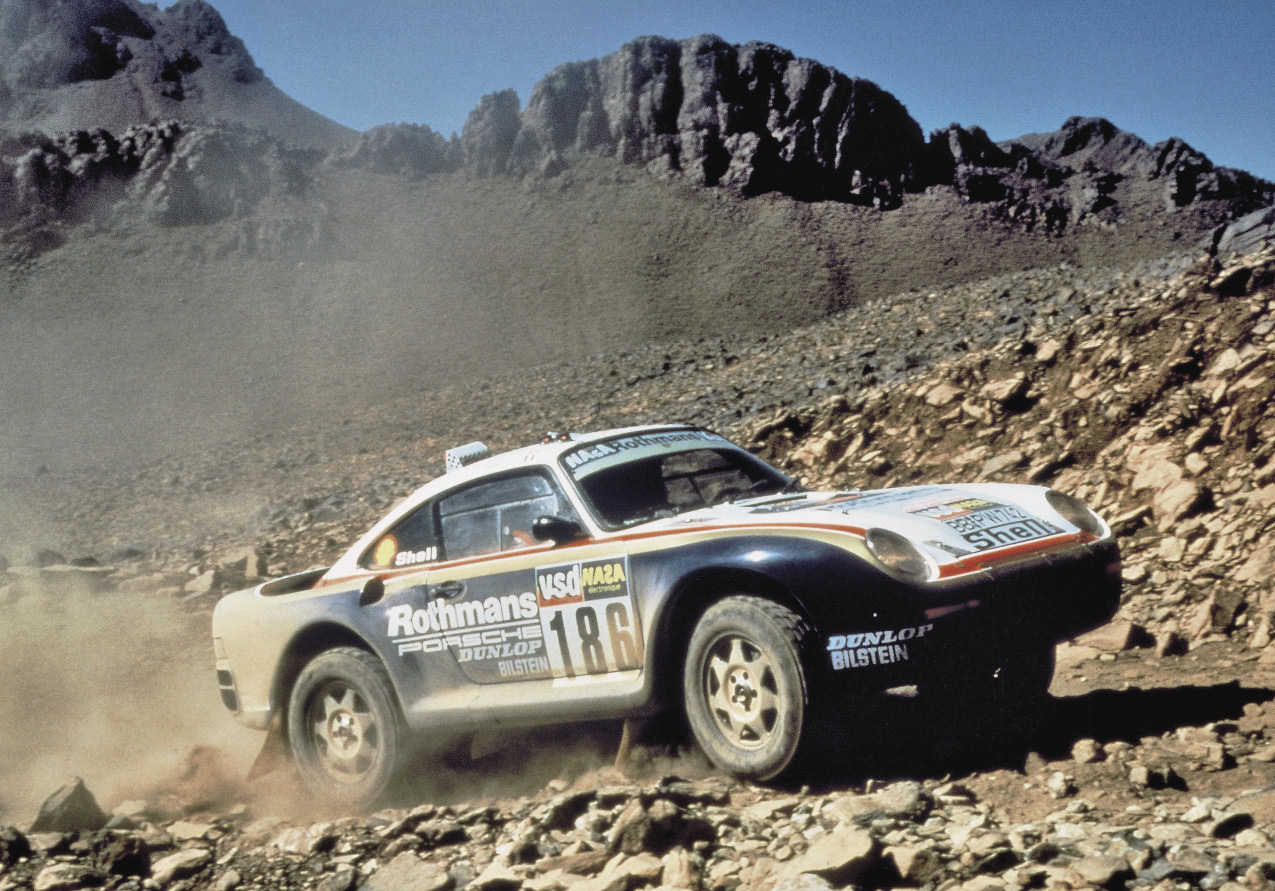 |
 |
Rothman’s Paris-Dakar 959 & 961 Le Mans Sportscar
Major Victories: Paris-Dakar Rally (1986)
24 Hours of Le Mans Class Victory* (1986)(*Experimental IMSA GTX class)
Championships: N/A
Drivers: 959: René Metge, Dominique LeMoyne, Jacky Ickx, Roland Kussmaul, Günter Steckkönig
961: René Metge, Claude Haldi, Claude Ballot-Léna, Kees Nierop
Engine: Flat-six cylinder, water/air-cooled twin turbo (Type 935)
Displacement: 2.85L
Horsepower: 400 bhp @ 6,500 RPM / 640 bhp @ 7,800 RPM
Gearbox: Six-speed manual, differential lock, electronic AWD
Layout: R4WD
Weight: 1,260 kg / 1,150 kg
Dressed similarly to Metge’s 1984 Paris-Dakar winning Rothman’s 953, Porsche sent three 959s to cover the 13,000-km desert rally in the ultimate test of the 911’s versatility. Of 113 coupes built in 1986, these three were equipped with a 330-litre fuel tank, lightweight plastic suspension components and an electronic mid-differential 4WD system with adjustable front/rear torque settings. Of 488 cars that started the rally, just 68 saw the finish. René Metge took top honours for his third career victory, followed by Jacky Ickx in second and Roland Kussmaul in sixth.
Based off the 959, the one-off 961 was designed to fight the Group-B sports cars at Le Mans in 1986. The hefty four-wheel-drive system was modified to compete at the Sarthe Circuit, putting greater emphasis on rear-wheel power distribution. But the drivetrain and lack of similar competition meant it needed numerous reclassifications. The 961 finished a strong seventh overall at the 24 Hours, but only managed 24th in the final round of the Camel GT series in Daytona, the result of tire issues from the banked turns. Hoping for a stronger result the following year at Le Mans, Dutch-Canadian Kees Nierop suffered a gearbox lockup more than halfway into the race, causing him to spin and hit the wall. The car caught fire and was severely damaged. After just three races, the 961 program was cut due to costs and classification issues.
** The 1986 Le Mans race was also the debut of the Porsche Doppel-Kupplung (PDK) double–clutch transmission. The system only lasted 41 laps before failing, but is now utilized in a large number of production models today.
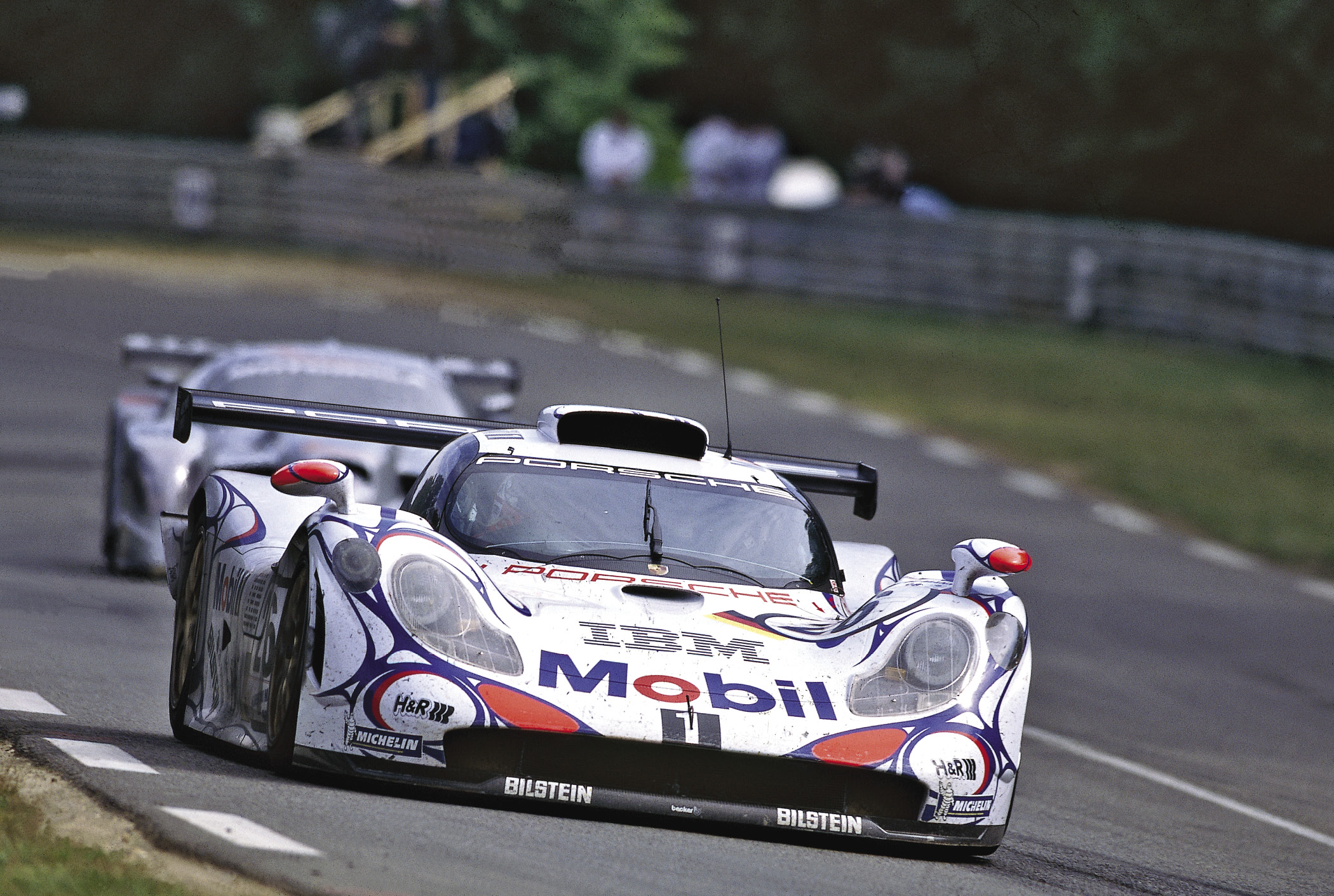
Porsche AG Mobil1 911 GT1 (’96/Evo/’98)
Major Victories: 24 Hours of Le Mans GT1-Class Victory (1996)
24 Hours of Le Mans Overall Victory (1998)
Championships: N/A
Drivers: Hans Joachim Stuck, Thierry Boutsen, Bob Wollek, Karl Wendlinger, Yannick Dalmas, Scott Goodyear, Laurent Aïello, Allan McNish, Stéphane Ortelli, Jörg Müller, Uwe Alsen, Emmanuel Collard, Ralf Kelleners, Yannick Dalmas, Thierry Boutsen
Engine: Flat-six, water-cooled, double-intake twin turbo
Displacement: 3.2L
Horsepower: 600 hp @ 7,200 RPM / 550 hp @ 7,200 RPM (’98)
Gearbox: Six-speed full-synchro / Six-speed sequential, triple-disc clutch (’98)
Layout: MR
Weight: 1,000 kg (approx.)
In the era of GT1 dominance, Porsche decided to build the ultimate GT car just nine months in advance of the 1996 running of the 24 Hours of Le Mans. Set to take on heavily-modified supercars, including the Ferrari F40 and McLaren F1, the Porsche 911 GT1 was created for one purpose – the overall victory. It literally is a race car built for the street. Porsche built 25 Straßenversion (Street Version) models to meet the minimum homologation requirements to qualify for Le Mans. The 911 GT1 featured a dramatic long-body design similar to the ‘Moby Dick,’ consisting entirely of carbon-fiber Kevlar and a front section based on the 993. The engine was moved from its rear layout to sit ahead of the rear axle to fully exploit the regulations and optimize performance and balance.
The two factory GT1s showed great reliability throughout the race, only to be defeated by Joest Racing’s Porsche-designed LMP1 car and Type 935 engine by a single lap. Returning in 1997, the GT1 Evo included improved aerodynamics, a wider front axle and modified ECU. A total of eight 911 GT1s entered Le Mans – two by the factory team. Setting the highest top speed in qualifying at 326 km/h, the race was not nearly as promising. Just 17 of 48 total entries completed the race. All but two GT1s retired with reliability issues, including both factory entries, the last one going up in flames.
The GT1 ’98 was Stuttgart’s most modern car to date, but faced new challenges from the blisteringly fast Toyota GT-One and Mercedes-Benz CLK-LM. Using a carbon fiber monocoque for optimum weight savings, the car was longer, wider and lower for improved aerodynamics. The updated engine was less powerful on paper at 550 hp, but the new unit proved to be much more consistent, as the No. 26 and No.25 GT1s took top spots on the podium, winning by three and four laps over the Nissan R390. It marked the 16th victory at Le Mans for Porsche and Norbert Singer, and their last one to date. That same year, the No. 26 GT1 was involved in a spectacular crash in the Petit Le Mans at Road Atlanta, when Yannick Dalmas flipped after driving in some dirty air.
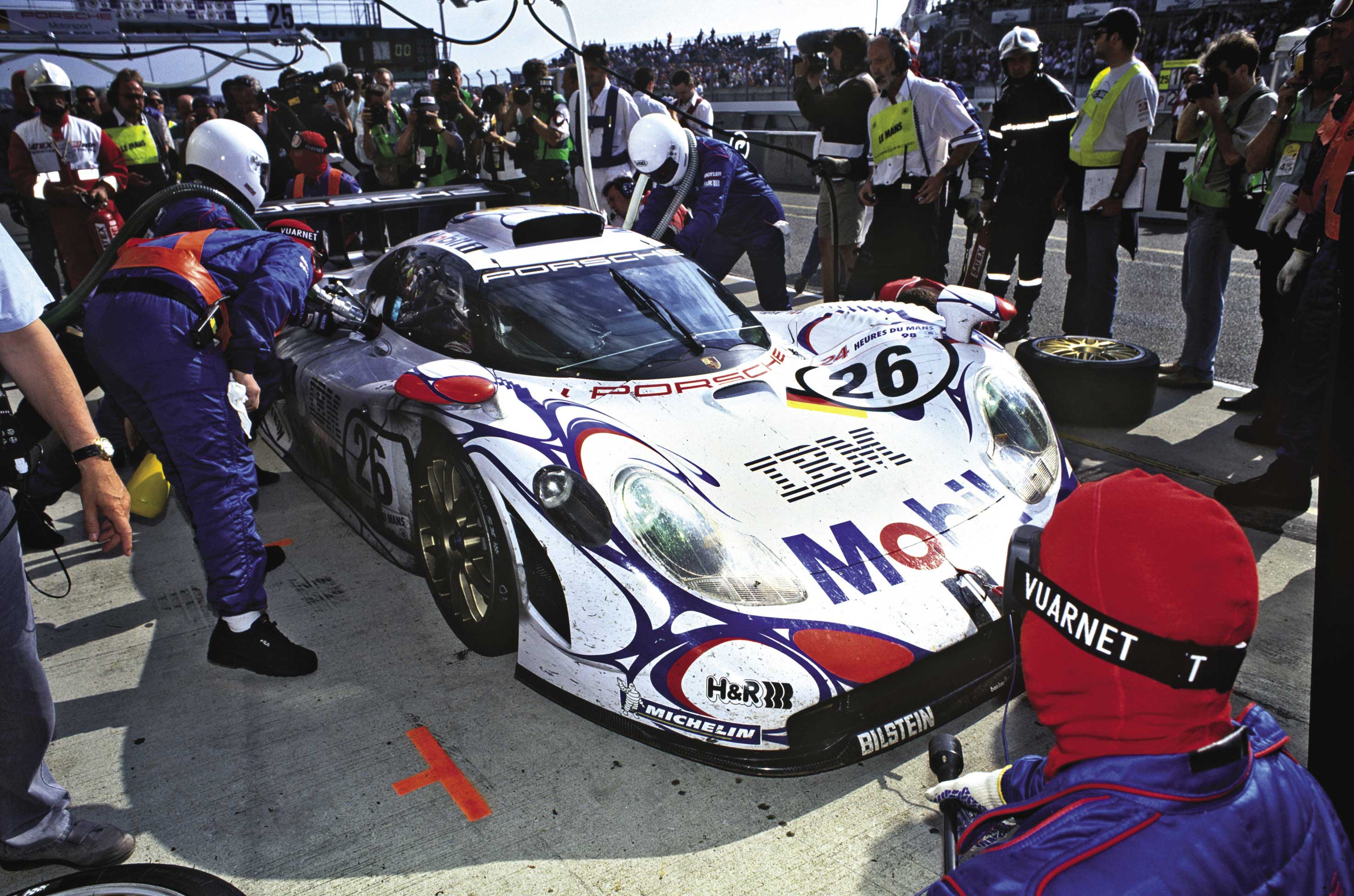
Allan McNish on the GT1: “The 1996, ’97 and ’98 GT1 era was one of massive pace development. The ’96 car changed the face for sports cars at the time. Normally, GT cars were basically road productions stiffened up with roll cages and things like that. Once the GT1 came in, it was quite clear that others such as the McLaren (F1) were going to come onto the scene as well.”
“When you got into the ’98 car, it was a true racing car. The radiator went from being just in front of your feet to the correct position; you had a sequential gearbox as opposed to the old H-pattern gearbox; you actually had a dogbox and not synchromesh. We had run syncromesh in ’98 for Le Mans, only due to the gearshifts that were required for that place at the time, and everything else was a thoroughbred racing car.”
“Ultimately we struggled for pure pace in the shorter races in comparison to, say, a Mercedes; partly due to the fact with the flat-six turbo and the air restrictors, we didn’t have any bottom-end power. The car always had a tendency to understeer. And I think that’s a Singer trait. It’s one of the reasons they were so strong at Le Mans, because it was a very consistent car. We could have trimmed it out a little bit for Le Mans, but ultimately we wanted to keep a little bit of extra wing on it, just to give that security – which was, without doubt, the right way to run it – because when it came to the slippery conditions through the night – a bit of rain, a bit of drizzle – that sort of thing, that’s when we’re on our own and into our own.”
“Overall, the car was suited for Le Mans. It was a car you could hustle, it was a car you could throw around. I was quickest on (Le Mans) test day by I think a couple of hundredths over Martin Brundle and the Toyota (GT ONE). There were quite a few times when the wins were there on the plate, but thankfully, it came together at Le Mans.”
“But the GT1 just gave you that feel and that confidence; it was something that was nice. And I’m biased, but it’s still the prettiest car I’ve ever driven.”
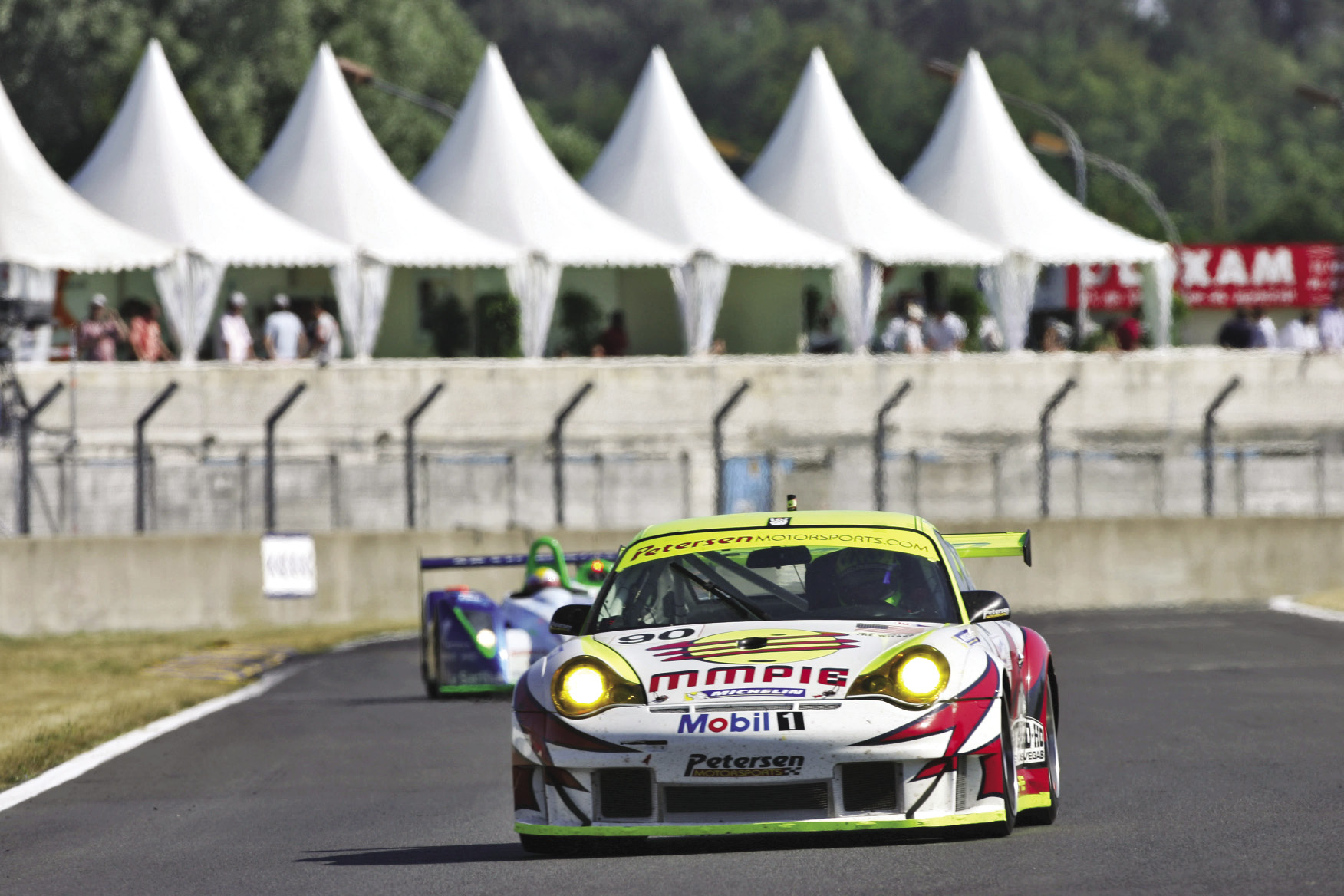
Petersen/White Lightning 911 GT3 RSR (996)
Major Victories: 24 Hours of Le Mans Class Victory (2004)
12 Hours of Sebring (2005)
Championships: American Le Mans (ALMS) GT2 Team Championship (2005)
ALMS GT2 Drivers’ Championship (2005, 2006)
Drivers: Jörg Bergmeister, Patrick Long, Sascha Maassen, Timo Bernhard, Lucas Lühr
Engine: Flat-six, water-cooled naturally-aspirated
Displacement: 3.6L
Horsepower: 445 bhp @ 8,250 RPM
Gearbox: Six-speed manual (H-pattern synchro / sequential dog-type)
Layout: RR
Weight: 1,100 kg
Petersen Motorsports enjoyed a great deal of success in 2003 with the 996 RS taking the class win at Le Mans paired with the Alex Job racing outfit. Returning in 2004 as Petersen/White Lightning, the 996 was upgraded to RSR status, bringing back the nameplate and producing just 48 competition-only models in the first year. A relatively small operation, Petersen/White Lightning took an incredible class win and 10th place overall at Le Mans after losing seven laps with a jammed gearbox. Going for the three-peat in 2005, the team fell short by just one lap to the Alex Job/BAM! RSR, but took a commanding win at Sebring, finishing seventh overall in a field of 38 cars. The team announced its withdrawal from ALMS in 2008 after Petersen and White Lightning decided to part ways, with Petersen opting to return to rallying.
Patrick Long on the 996: “My career started in 996 Cup cars and in the 996 RS. Those cars had H-pattern synchro boxes; they weren’t as much of a race car as when the RSR came out. We started with the RSR at the beginning of 2004, so from ’04 to ’06, I drove that car. I remember going to Le Mans my first year, the car was still a work in progress. The aero was a lot more aggressive with the RSR, but I think when the 996 moved to the RSR it became a much more iconic car. For Le Mans, we weren’t sure if we were going to run the H-pattern or the sequential gearbox. We qualified with the H-pattern synchro box, then for the race we put one of the prototype sequential boxes in it. It was a really user-friendly car.”
“For me, the memory of the 996 RSR was with Petersen/White Lightning. It was special, because the one chassis number won Le Mans in 2004, then the ALMS GT team and drivers title in ’05 and the drivers title again in ’06 with Jörg Bergmeister.”
“We felt like it was a David vs. Goliath situation; we were the small, single-car effort, never the favourite, so it was cool for us underdogs. We were a road crew and we would prep in the parking lot – we just had a lot of fun. Dale White was a desert racer turned GT guy. He was really smart with strategy and hands-on with how he managed the team. But to get those victories with that car, it holds more on my CV than anything. We ran that car for three full seasons, even before Jörg and I were with the team, with David Murray and Craig Stanton. At the end, in the last four or five races, we were trying to capture the ’06 title and were literally welding the thing back together because it was falling apart at the seams. But that car is still around. Out of all the 996s, I think arguably, that one has the most history.”
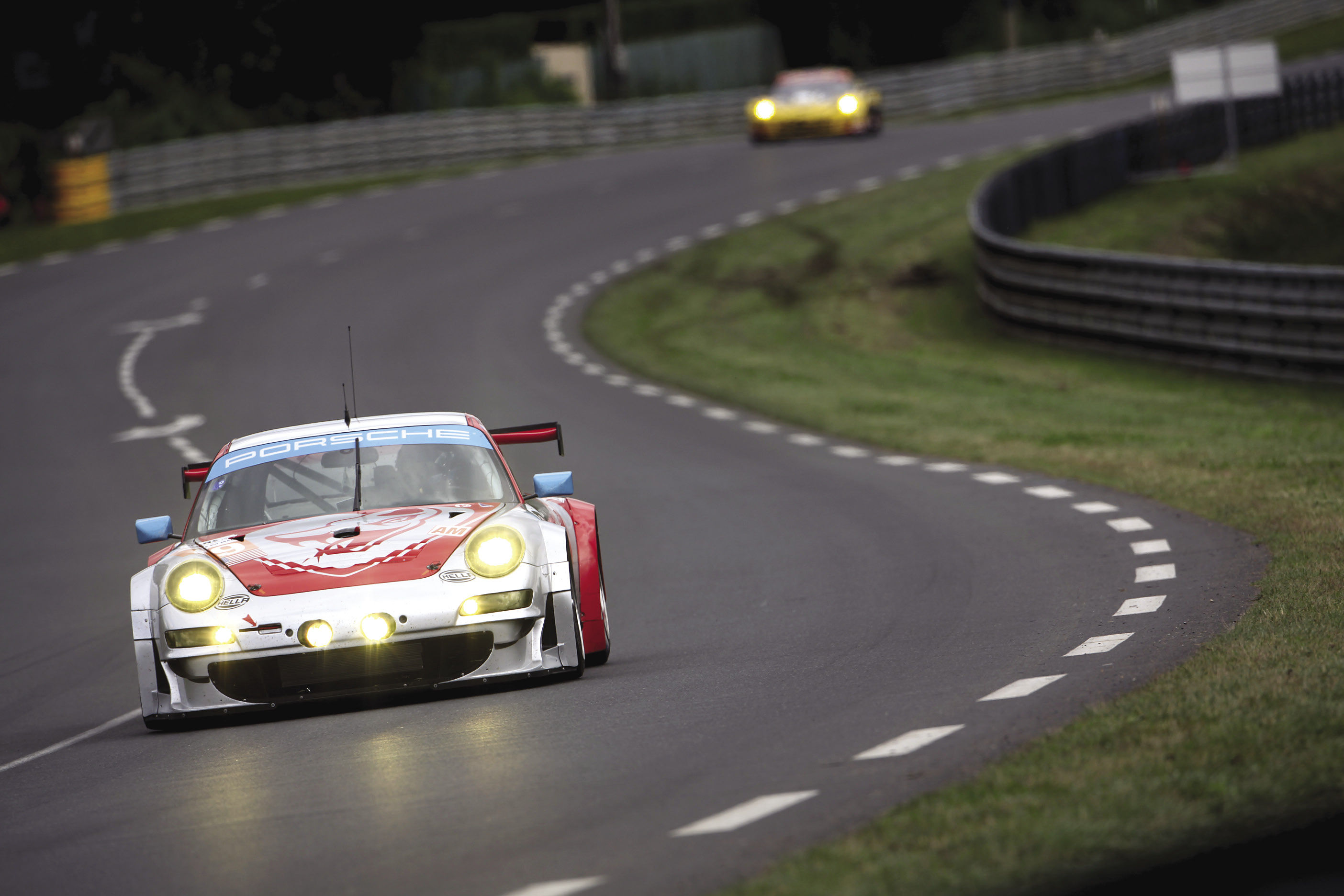
Flying Lizard 911 GT3 RSR (997)
Major Victories: Petit Le Mans GT2-Class Victory (2007)
Championships: American Le Mans Series GT2 Drivers’ Champions (2008, ‘09)
ALMS GT2 Team Championship (2008, ‘09)
ALMS GT Driver Champions (2010)
Drivers: Jörg Bergmeister, Wolf Henzler, Marc Lieb, Patrick Long, Johannes van Overbeek, Darren Law, Lonnie Pechnik, Seth Neiman, Alex Davison, Patrick Pilet, Richard Lietz
Engine: Flat-six, water-cooled naturally-aspirated
Displacement: 3.8L
Horsepower: 485 bhp @ 8,500 RPM
Gearbox: Six-speed sequential dog-type manual
Layout: RR
Weight: 1,225 kg
One of the strongest outfits in the history of Porsche, the factory-backed Flying Lizard team quickly became a household name in motorsports with its striking, Troy Lee-designed Red and Silver 911 GT3 RSR. In 2007, the team switched from the 996 to the new 997, which was praised as being more reliable and capable than its older sibling. The new car had greater displacement, more power, 10% stiffer chassis, wider rear track, 14-inch rear wheel accommodations and a lower center of gravity.
Piloting the first-generation 997 RSR, Flying Lizard took Petit Le Mans in 2007, followed by ALMS team and driver titles in ’08 and ’09 with honours going to Jörg Bergmeister (’08, ‘09), Wolf Henzler (’08) and Patrick Long (’09). Bergmeister and Long repeated again in 2010, capping an incredible three-year span that included 14 wins in 30 races – a 47% winning rate. Flying Lizard has made it to the podium an incredible 58 times since joining the ALMS series in 2004, 38 of those in the 911 GT3 RSR Type-997. After Porsche announced the new 991 RSR and the termination of 997 factory support, Flying Lizard decided to transition to the 911 GT3 Cup car as part of the one-make GTC class in ALMS. As part of the move, the team also announced a new support program for customers looking to get involved in the ALMS GTC and IMSA GT3 Cup Challenge series.
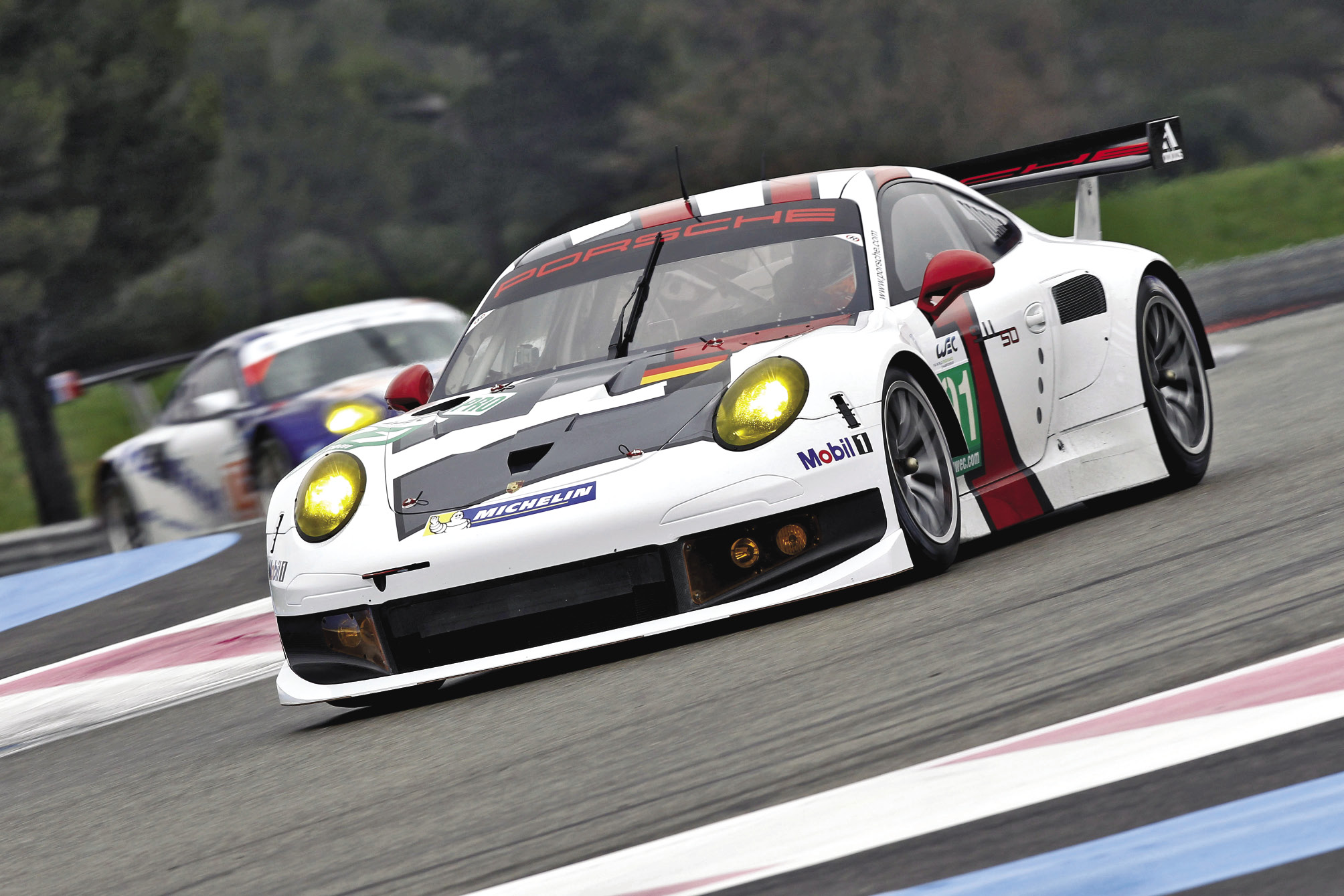
Porsche AG 911 RSR (991)
Major Victories: TBD
Championships: TBD
Drivers: Jörg Bergmeister, Marc Lieb, Richard Lietz, Romain Dumas, Patrick Pilet, Timo Bernhard
Engine: Flat-six
Displacement: 4.0L
Horsepower: 470 hp @ (est.)
Gearbox: Six-speed sequential Porsche GT with paddle shift
Layout: RR
Weight: 1,245 kg
Far and away the most technologically-advanced Porsche to date, the 911 RSR lends itself to the naturally-aspirated heritage of RSs and RSRs passed. This seventh-generation, all-carbon racer is a complete redesign, built specifically for the World Endurance Championship and the 24 Hours of Le Mans GTE Class. The Porsche factory Team Manthey WEC works squad will field the two RSRs exclusively this season, which should see action in North America next year as part of the new United SportsCar Racing series.
Among the changes are a 10 cm longer wheelbase to reduce weight in the rear, new wishbone front suspension, a single central air intake (opposed to the previous three), aggressive aerodynamics and, perhaps the biggest of all, a brand-new, lightweight six speed, sequential paddle-shift gearbox.
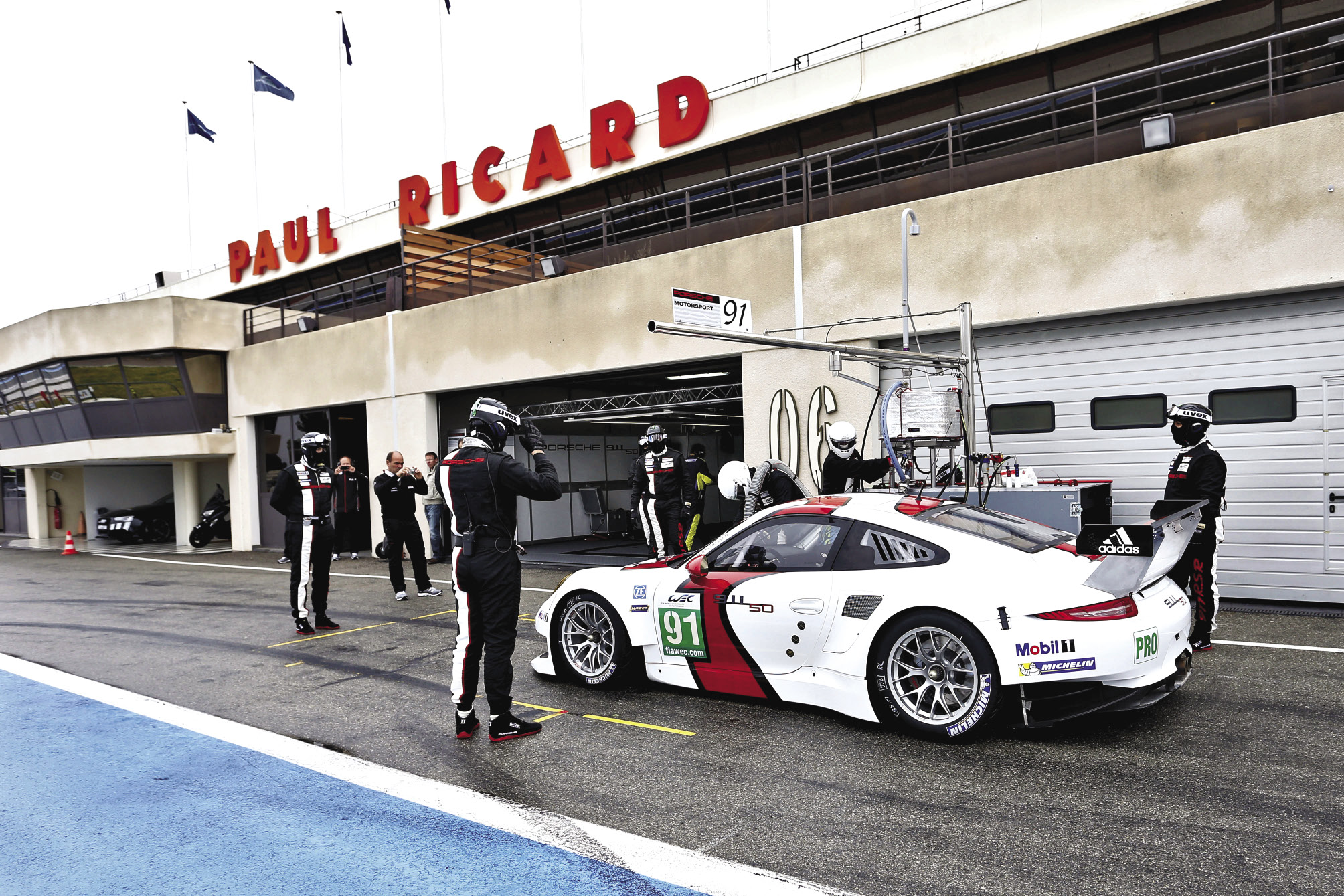
The 991 carries some of the biggest technological changes in the 911 bloodline since the move from air- to water-cooled engines. It marks the beginning of a new chapter for Porsche. Purists may argue that the newest rendition moves away from the tactile feel and purity of the driving experience, but it is a linear evolution. Porsche is one of very few companies that has – and will continue to – base itself and its cars off one thing: a no-compromise, no-holds-barred, racing pedigree.
Jörg Bergmeister on the 991: “The 911 has changed step-by-step in pretty much every area; wheelbase, engine, gearbox and aerodynamics. It is much more race car now than when I started racing in the 911. The 911 RSR (991) is again another step up from the 997 GT3 RSR, it handles more like a purpose-built race car. You can feel even more downforce and the car is better-balanced (longer wheelbase and weight distribution). Personally and quintessentially, this is the best RSR ever.”
JL






















